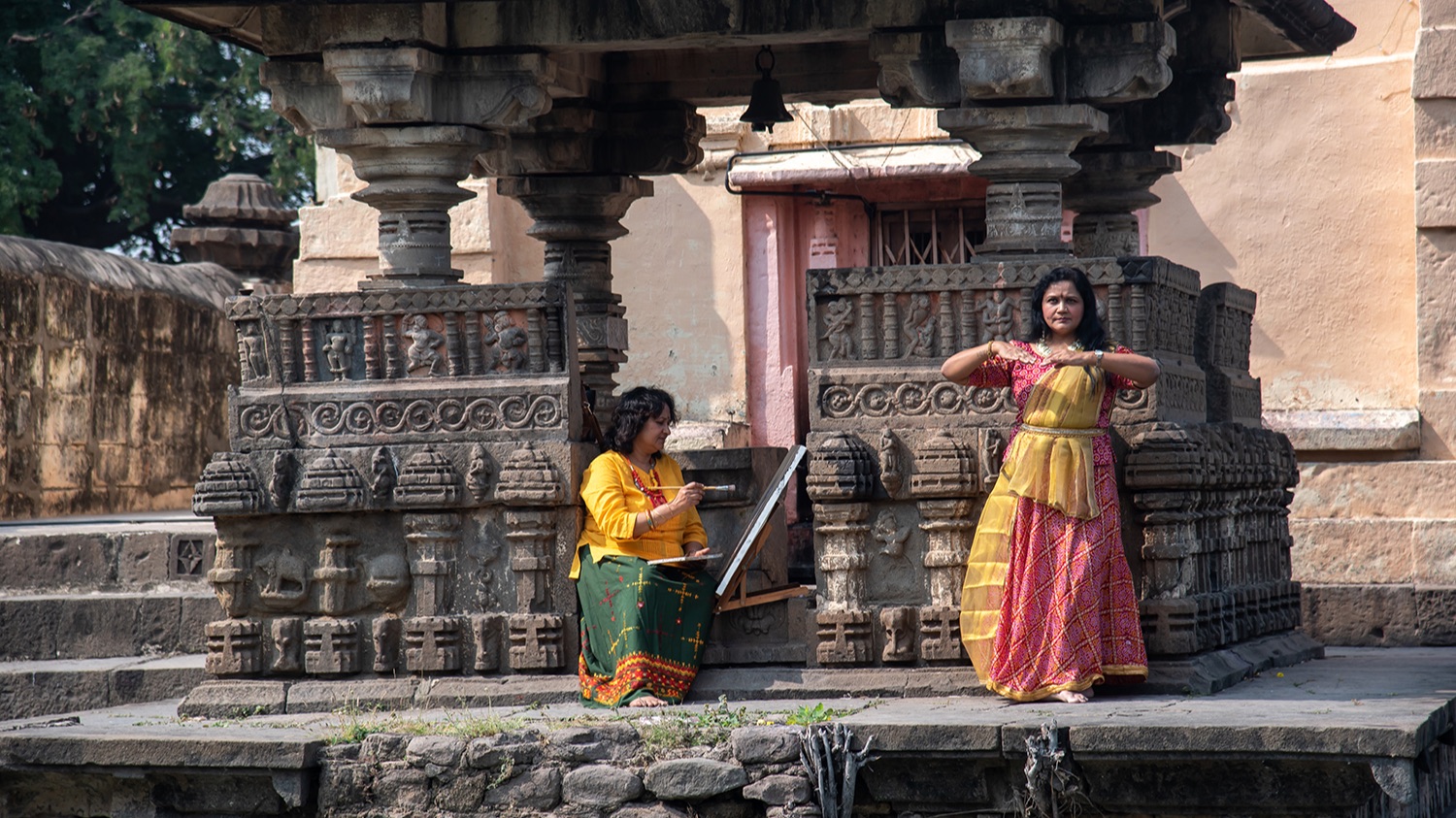Beyond Aesthetics: Artists as Ambassadors of Environmental Consciousness

By: Rashmi Ghosh
When it comes to choosing between decorative art and thought-provoking art, I always choose the latter. Art should touch your heart and hit you like a thousand bolts and make you think, ponder, and reflect. Art comes from the depths of our beings and transcends all religions and geographical differences. This is something our minds capture and our brains relish, the emotions a particular art evokes in our consciousness.
(The Thinker by Auguste Rodin – Source: The Thinker | History, Description, & Facts | Britannica)
Art has long been revered for its ability to move, inspire, and challenge our perceptions. Beyond its aesthetic value, art has also served as a powerful medium for social and political change. In recent years, a growing number of artists have embraced their role as ambassadors of environmental consciousness, using their creative talents to raise awareness and inspire action on urgent ecological issues. I admire the work of Edward Burtynsky, the Canadian artist and photographer. Burtynsky is an advocate for environmental conservation, and his work is deeply entwined with his advocacy. His work comments on the scarcity left by industrial capitalism while establishing an aesthetic for environmental devastation.
Raising Awareness and Inspiring Action
I believe that artists have an inherent ability to capture the essence of environmental issues through their work. Whether it's through paintings, sculptures, installations, or multimedia projects, artists can evoke emotional responses and prompt viewers to contemplate the impact of human activities on the natural world. By creating thought-provoking pieces that challenge the status quo and question our relationship with the environment, artists like Olafur Eliasson, Robert Smithson, Andy Goldsworthy, and others have become catalysts for change
Art has the power to transcend language and cultural barriers, making it an effective tool for raising awareness of environmental issues. Artists can convey complex scientific concepts and environmental challenges in accessible and relatable ways, helping to bridge the gap between scientific knowledge and public understanding. Through their artwork, they can ignite conversations, spark curiosity, and inspire viewers to take action to protect our planet. That’s why art is called the universal language, and everyone can appreciate the work of an artist, even if they don’t understand their spoken words. Artist Andy Goldsworthy sees nature as something that is found in artificial spaces like galleries but extends to the secluded parts of the outer world where his artworks come to life.
Artistic Activism
Artistic activism is a burgeoning movement where artists actively engage in environmental advocacy and use their creative skills to promote positive change. From organizing large-scale public installations to participating in protests and campaigns, artists are taking to the streets and utilizing their talents to amplify environmental messages. By merging art with activism, they are able to reach a wider audience and create a lasting impact. Bearden’s 1941 Sacrifice, watercolor references Picasso’s response to the atrocities of the Spanish Civil War and was one of the most famous examples of art activism.
Collaborations with Scientists and Environmental Organizations
Artists are increasingly collaborating with scientists, environmental organizations, and conservationists to bring attention to critical environmental issues. These interdisciplinary collaborations fuse art and science, combining creative expression with scientific research and data. These partnerships create opportunities for dialogue, foster innovative solutions, and enhance public understanding of complex environmental challenges.
I visited such a thought-provoking exhibition at Zapurza Museum, Pune, India, in December 2022 titled "Critical Zones: In Search of a Common Ground." This was a traveling exhibition brought to us by the Goethe Institute and Max Mueller Bhavan and talked about the Critical Zone, or the zone at the Earth’s land surface extending from the top of the vegetation canopy through soil to surface depths at which fresh groundwater freely circulates. The exhibition conveyed through close dialogue between curators, art mediators, science theorists, and sociologists that man, through his greed and ignorance, has caused irreplaceable damage to this critical zone.
(Courtesy: Goethe-Institute / Max Mueller Bhavan Mumbai and ZKM Photo Credit: Anil Rane)
Art in Public Spaces
Public art installations have the power to transform public spaces into platforms for environmental dialogue. By bringing art directly to the public, artists can spark conversations, engage communities, and inspire a sense of collective responsibility for the environment. From large-scale murals addressing climate change to interactive installations highlighting the importance of biodiversity, public art has the potential to leave a lasting impact on society.
In 2009, Brazilian artist Nele Azevedo created a public art installation that involved 1000 sculptures of men and women figures. Her work titled "The Minimum Monument (Melting Men)" was created to address the larger issues of global warming, climate change, and species depletion. The sculptures were placed in the outdoor space throughout the day, and they slowly melted until they disappeared. It was quite sad and subtly morbid to see these figures deplete and disappear in the heat, hence signifying the detrimental and hard truths about global warming.
(The Minimum Monument – Melting Men, exhibited in Berlin. Source: https://www.arch2o.com/the-minimum-monument-project-nele-azevedo)
Artists are no longer confined to the realm of aesthetics. They are emerging as ambassadors of environmental consciousness, harnessing their creativity to ignite change, raise awareness, and inspire action on pressing environmental issues. Through their thought-provoking artwork, artistic activism, collaborations, and public installations, artists are making significant contributions to the global environmental movement. By recognizing and supporting artists as allies in the fight for a sustainable future, we can harness the transformative power of art and create a more environmentally conscious society.

Sincerely
Rashmi Ghosh
Website: https://www.rashmighosh.art
Instagram: https://instagram.com.rashmi.ghosh.58
Stay connected with news and updates. Get on the Art NXT Level Weekly!
Join our mailing list to receive the latest news and updates from our team.
Don't worry, your information will not be shared.
